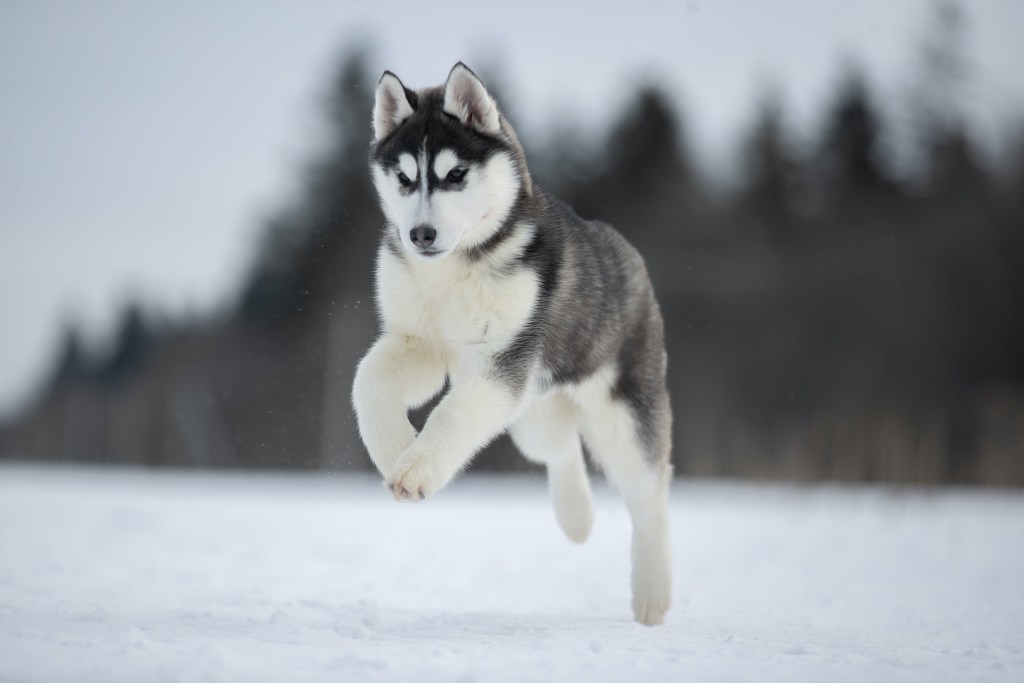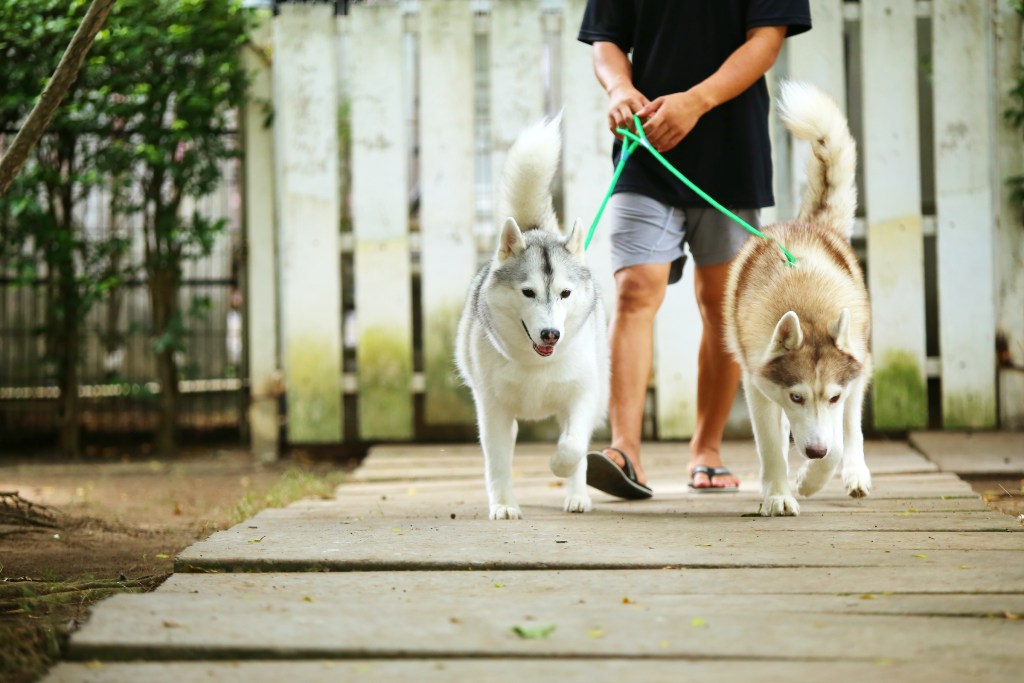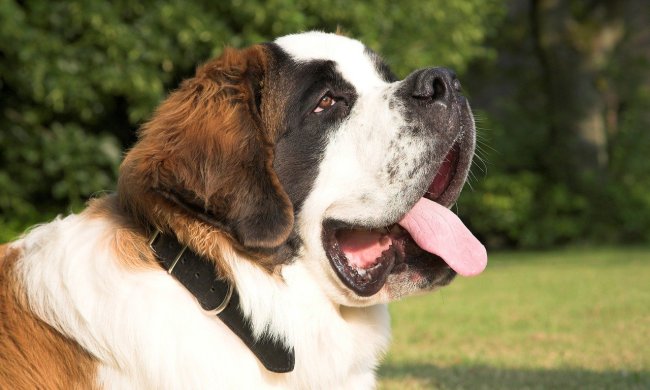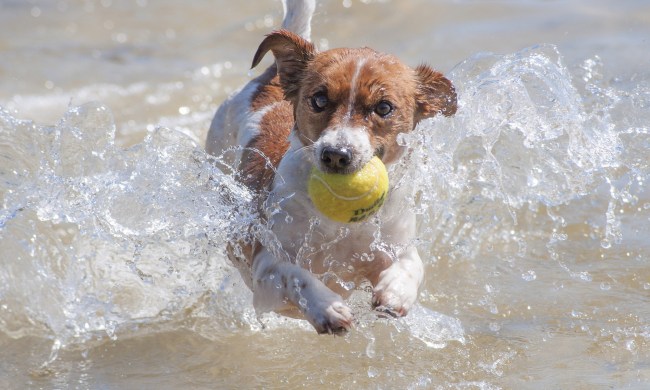As the 14th most popular dog breed — as ranked by the American Kennel Club — the Siberian Husky has a lot to prove. Luckily, these friendly, exuberant jokesters have no trouble winning over the hearts of their fans. From their enthusiastic vocal skills to their unique husky body language, there’s a lot to appreciate about Siberians.
There’s also a lot to learn! While some of the basics, like Siberian Husky weight, may not be as surprising as other fun facts, it’s important to study every aspect of the breed. Don’t worry, though, we’ve found some pretty unique facts too; so you’ll leave this article knowing everything you’ll need for trivia night, from the breed’s chilly history to all husky colors of the rainbow.
How much should a Siberian Husky weigh?
Despite its larger-than-life presence, the Siberian Husky is classified as a medium-sized dog. The exact Siberian Husky weight can vary quite a bit due to genetics, environment, and coat density, but just like other breeds, male Huskies tend to have bulkier builds than females. According to Hill’s Pet, the ideal weight range for this breed is between 35 and 60 pounds. Male Siberians tend to tip the scales at about 45-60 pounds on average, while females come in at about 35 to 50 pounds (via American Kennel Club).
The difference in height between the sexes is less prominent than the difference between weights. If you ask the AKC, males measure about 21 to 23.5 inches from shoulder to paws, while females stand at about 20 to 22 inches.

Is a white Siberian Husky rare?
If you feel like you see way fewer white Huskies than any other color, you’re probably right. These pure white dogs are the result of a genetic rarity: the genes that control their coat color are completely recessive, resulting in no color whatsoever (via Aruff Siberians) You’ll also notice white Huskies’ bright blue eyes, which also lack the dominant gene for color.
To qualify as a truly “white” Husky, no color can be present on the coat — including the undercoat. Only the skin around the nose and eyes might have a shade of black or liver color to them, notes Aruff Siberians.
What is the rarest color of the Siberian Husky?
As you may be able to guess, the pure white “coloring” is the rarest coat color for Siberian Huskies. Of course, with over a dozen different coat types and colors, the shades of the Husky rainbow are never-ending. According to the longtime Siberian Husky breeders at Aruff Siberians, you might run into these husky colors:
- jet black and white
- diluted black and white
- wolf gray and white
- silver and white
- medium/dark gray and white
- white
- Agouti and white (AKA Wolf-like)
- copper/dark red and white
- diluted red and white
- red and white
- sable and white
- pinto
- piebald
Pinto and Piebald aren’t colors, but patterns, both of which are quite rare in Siberians. The folks at Aruff describe Pinto as having “an excess of white” around the shoulder and head area, which can even result in a mask-like marking on the face. Piebald refers to a largely white Husky with irregular patches of color across the body.

Can Siberian Huskies see in color?
Even though you may have heard that dogs see in black and white, that’s not entirely true. A dog’s vision is similar to that of a red-green color blind human, though instead of more colors appearing in gray, many colors appear the same as one another. That leaves Huskies, as well as all dogs—seeing the world in blues, yellows, and shades of gray, according to Dog Vision.
Where does the Siberian Husky originate from?
As its name suggests, the Siberian Husky was developed as a sled dog breed on the Siberian Peninsula of Northern Asia. This area, populated by the Chukchi people, is located in the very Northeast of what is now Russia and is known for its extremely harsh winter conditions (via American Kennel Club). Temperatures often drop to 100 degrees below zero, with winds up to 100 miles an hour or more, but these dogs were still able to transport people, food, and life-giving supplies from village to village.
The Chukchi relied on this breed for survival, so it’s no wonder why they’re such a large part of Chukchi shamanism. According to the AKC, it is said that the Chukchi believe two Huskies guard the gates of heaven, “turn[ing] away anyone who was cruel to a dog during their life on earth.”
Siberian Huskies have sure come a long way from their days on the Siberian tundra, though most still enjoy running and other endurance activities. They make friendly, enthusiastic companions for people who love to stay active — especially those who can find a laugh or two in this breed’s mischievous tendencies.



